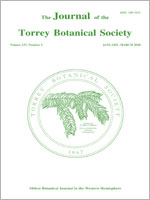Calcium distribution during peltate and capitate glandular trichome development in Lavandula pinnata L. was examined with the potassium antimonate precipitation method. In order to establish a role for calcium in the secretory process and elucidate calcium function in the glands, the effects of calcium removal were investigated by treatment with nifedipine (Nif, a calcium channel blocker) and Ethylene glycol-bis (2-aminoethyl ether)-N, N, N′, N′-tetraacetic acid (EGTA, a calcium chelator). Untreated, mature glands accumulate many calcium precipitates in the subcuticular space and adjacent cell wall during secretion. In Nif or EGTA treated plants these precipitates disappear, and the amount of secretory product is drastically reduced. Calcium removal also results in a reduction in gland density, cells with decreased cytoplasmic density, formation of a lax cell wall, abnormal formation of the subcuticular space, thinning of the cuticle, and the presence of multivesicular bodies near the plasma membrane. At the post-secretory stage, calcium precipitates are common on the degenerating organelles. These results support a role for calcium in gland development, secretion, and programmed cell death.
How to translate text using browser tools
1 January 2010
Calcium distribution and function in the glandular trichomes of Lavandula pinnata L
Shan-Shan Huang,
Jing-Ping Liao,
Bruce K. Kirchoff
ACCESS THE FULL ARTICLE
antimonate precipitation
calcium
EGTA
glandular trichome
Lavandula pinnata L
nifedipine
secretion





